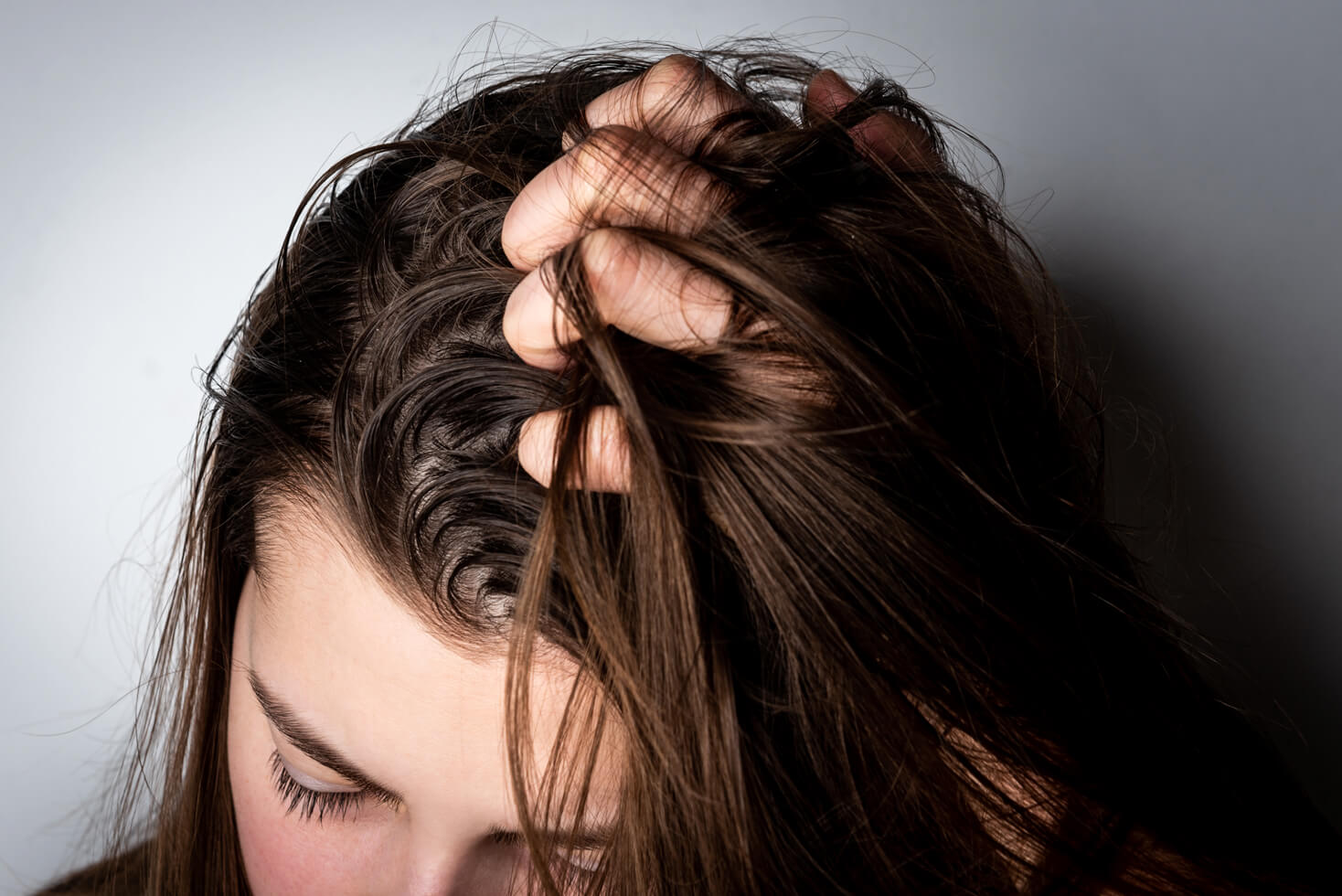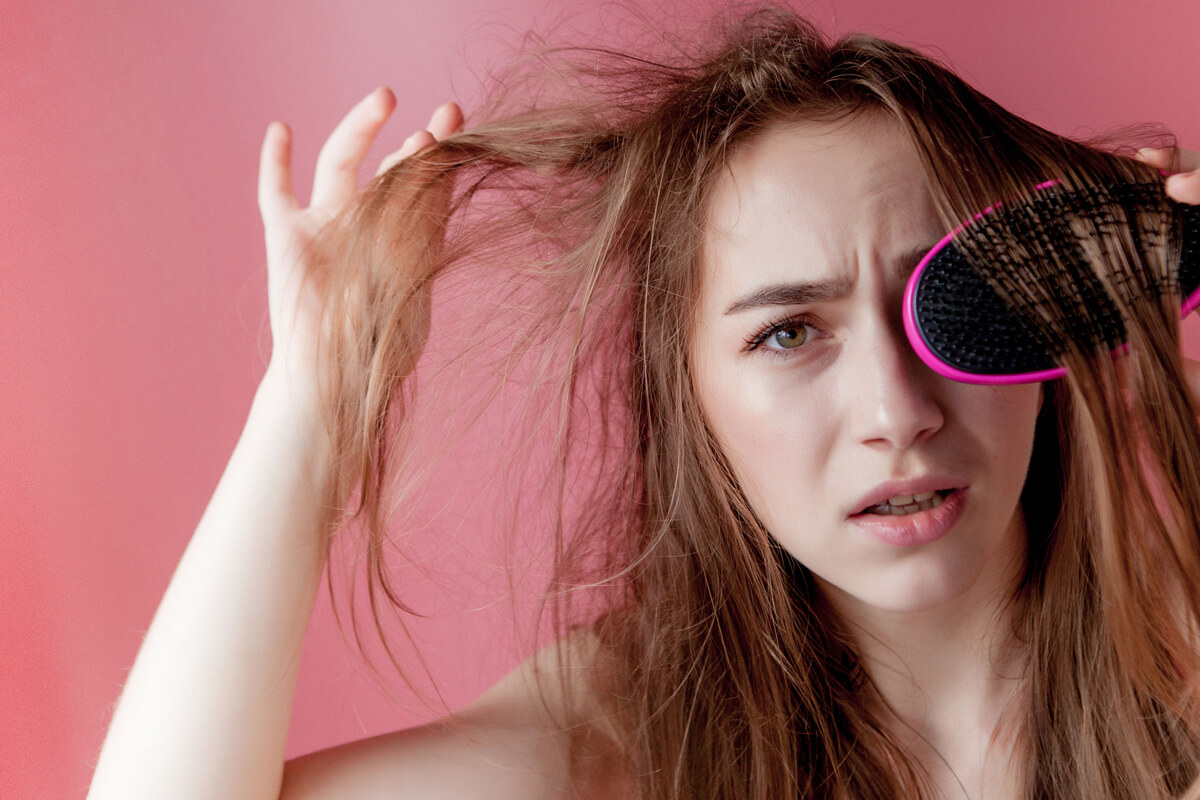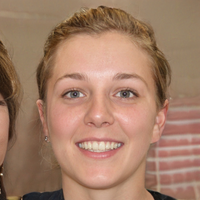How to Get Rid of Greasy Hair After a Keratin Treatment
Updated on
This post may contain affiliate links. As an Amazon Associate, we may earn from qualifying purchases.

I wished for frizz-free smooth hair but instead, I ended up with a head full of greasy hair after my keratin treatment.
On day 2, it was so bad that my hair looked permanently wet!
- Oily
- Limp
- Flat
- And lifeless
It was enough to throw off my whole appearance.
Aside from being an eyesore, my hair felt yucky and sticky in places like my hairline and parting.
I couldn’t bear the feeling.
It felt like I was rubbing lard into my hair.
Luckily, I managed to survive the first 3 days with dry shampoo, and it was time to blitz my locks from the oily buildup with a much needed follicular refreshment.
However, after a few shampoos, I realized my freshly washed hair was turning into a droopy mess again by the end of the day!
I was devastated.
And I wasn’t mentally prepared to deal with this for another 3 months.
I was in two minds whether to stick with it or revert the keratin treatment. But then I realized how much money I threw on this. It would be futile to just give up without trying to understand what I was doing wrong.
So here’s what I did:
I went for a chat with my hairstylist friend, and after sharing my aftercare routine with her, she finally helped me solve my greasy hair woes.
I also learned a bit more about the aftercare process, how the scalp works during this phase, and why my hair felt greasy for a while before finding its happy place.
Trust me; there’s no need to panic.
All you have to do is work your way back and understand what you may have been doing wrong since your treatment, then fix it.
Here is a list of the solutions that work for greasy hair and oily scalp after keratin treatments:
1. Use Dry Shampoo
I always recommend a low maintenance post-keratin hair care routine.
Wash less, and don’t overload your hair with products.
Dry shampoos have always been my savior between washes. And by using more of it after my treatment, I finally conquered my greasy roots.
2. Use a Boar Bristle Brush
A boar bristle brush helps to loosen dirt, buildup, and excess greasiness from the roots. It also helps distribute your scalp’s natural oils through the length of your hair to moisturize and add shine without using any fancy products.
Try it and see how it cuts down on your hair washing.
3. Use a Sulfate-Free Shampoo
Regardless if you do a keratin/color treatment or not, sulfates do not belong to your hair products. They belong to your kitchen cleaning products.
I always emphasize to NOT use heavy chemical shampoos. They don’t do your hair any good.
I will rather wash my hair with plain water than using one of them.
4. Wash Your Hair Less
Combine the dry shampoo and the hairbrush to teach your hair to go longer without needing a shampoo.
Many No-Poo people do it. It’s all about adjusting and letting your scalp and hair self-regulate.
I’ve tried it, and all I can say is my hair feels pure, healthy, and my scalp feels great.
5. Don’t Wash Your Hair With Hot Water
As I said before, the keratin coating in your hair needs time to soak in. If you wash with hot water, you are literally melting off the coating, which will disintegrate into product residue and make your scalp oily.
6. Use Silicone-Free Light Conditioners
Silicone is a sticky plastic-like substance. Make sure you’re picking the right conditioner for your post-keratin care. A heavy conditioner with silicone will not rinse off easily with water, therefore building up residue.
And residue is one of the main causes of greasiness.
7. Try an Aleppo Soap
If you cannot find a chemical-free shampoo, try the old-fashioned handmade organic Aleppo soap.
I’m so glad this is still around, and just look at the ingredients!
- Olive oil
- Berry oil
- Pure Laurel leaves
- Water
Nothing feels purer than this. It’s anti-blushing, smoothing, purifying, and balancing.
Aleppo Soap
8. Sleep on a Silk Pillowcase
This is one of my favorite hair and skin care hack.
Sleep on silk because it wakes you up with tangle-free hair, zero frizz, and wrinkle-free skin.
Silk creates the smoothest surface for your hair and doesn’t cause friction on the cuticles.
Cotton, on the other hand, is a porous material, which absorbs oils from your face, hair, and dust throughout the day.
So when you sleep at night, a cotton pillowcase dehydrates your hair and your skin. That’s why you see crease marks on your face, and your hair looks frizzy and tangled in the morning.
And it doesn’t help if your hair feels greasy. By the time you hit your snooze button, your cotton pillow would have sucked out most of the moisture from your hair and skin, which probably explains why your scalp starts to feel greasy in the mornings as it starts to replace the natural oil.
Here are the good reasons why you need to change to silk bedding now:
- Good temperature regulator
- Hypoallergenic
- Doesn’t dehydrate the skin
- Friction-free
- Repels dust-mites (cleaner surface)
Related: How to sleep after a keratin treatment.
SLIP Silk Pillowcase
9. Avoid Touching Your Hair Too Often
Touching, stroking, and playing with your hair constantly throughout the day transfers dirt, and greasiness to your strands.
Think about it. Throughout the day, you may be touching your face a few times, transferring cream or moisturizers from your skin, then eating food, typing away on your keyboard, touching your phone screen, and passing all the dirt onto your hair.
So if your greasy hair is driving you nuts, stop fiddling with it.
It does work to keep the oiliness at bay.
10. Avoid Using Heat on Your Hair
Direct heat will melt the keratin layer in your hair, causing residue buildup, which results in greasy hair.
So put the flat iron away for 2 weeks and try alternative heat-free ways to style your hair.
If you absolutely have to, then make sure you use a safe and strong heat protectant to buffer your hair from the heat.
11. Blow Dry Your Hair With a Diffuser
If you need to blow dry your hair, do it with a diffuser attachment. This prevents direct heated airflow to ensure you’re not melting off the keratin coating.
Blow Dry Diffuser
So you need to figure out what’s turning your hair into an oil slick.
Why Does Your Hair Feel Greasy After a Keratin Treatment?

While in some cases, it may be the quality of your product, I found out that a majority of the time, it’s directly related to how you care for your hair after the keratin treatment.
Yes, I know this part is tricky, and you have to play by the rules, but the best thing to do is to let your hair be and not OVERDO it.
This is where most people get it terribly wrong.
So let me explain why your hair feels oily and sticky after a keratin treatment.
1. The Keratin Serum Coating is Still Fresh
There’s a good reason why you need to wait 3 days before washing your hair after a keratin treatment.
But this, of course, is not an exact science.
Why?
Because it depends on:
- The quality of your keratin treatment
- Your hair type
- Your hair texture
Some people’s hair may take longer to absorb the treatment.
For example, hair with lower porosity has a different texture, which is more stubborn and struggles to absorb most hair products.
If your hair is feeling waxy, it’s most likely that you have a low porosity hair problem. In which case, I will suggest being patient and not stress yourself about it.
Give the keratin treatment ample time to soak in without interfering.
The greasiness in your hair is due to the soft coating of keratin, which feels like residue but is not. It will eventually soak into each hair strand and make your hair feel a lot better.
Another reason why you will be struggling is the lack of shampoo within the first week, which leads to greasy roots from sebum buildup.
Here’s what you need to do to overcome this problem:
Use a dry shampoo to refresh your roots.
2. You Are Using The Wrong Shampoo
Shampoos that contain sulfates are the biggest culprits for greasy hair and an overworked scalp.
Sulfates are surfactants, similar to detergents used in household cleaning products. Not only do they strip keratin off your hair, but they also dry out your scalp.
And when this happens, your scalp triggers an automatic defense reaction to produce sebum, the natural oil required to protect the skin surface from bacterial infection.
Sebum is extremely important for both the skin and the hair. It keeps the skin pH balanced and the hair pliable, supple, and elastic to prevent breakage.
So when you use shampoos with harsh chemicals, your scalp has to work overtime to compensate with its natural oil to rebalance itself.
Most hair stylists recommend sulfate-free and sodium chloride-free shampoos after a keratin treatment.
If you are not using one yet, it’s time to make the switch.
Here’s the best product I highly recommend:
Arvazallia Keratin Care Set
3. You Are Washing Your Hair Too Much!
Look, not washing your hair for a few days may feel gross, but it’s actually a good thing for your scalp.
Shampoos are designed to make you think that washing your hair often is healthy. But sadly, the only people who profit from your obsessive-washing is the hair care industry.
Trust me; it’s not a good thing to keep stripping your hair with regular washes. It damages the acid mantle on your scalp, which, as a result, becomes severely dry, causing all sorts of problems like greasiness, dandruff, and fungi infections.
Any hair stylist will tell you this:
Your hair will look and feel significantly better and healthier if you wash less frequently.
4. Your Conditioner is Greasy and Heavy on The Cones
Most people don’t realize this, but conditioners can also make your hair greasy, especially when they have ingredients like Silicone.
After a keratin treatment, your hair already has a keratin coating, which it needs to gradually absorb.
If you’re using thick conditioners with Silicone during that settling in period, chances are, they are building up as residues.
The problem with silicone is, it’s like a plastic substance, and unless it’s rinsed off, it will make your hair sticky.
Some people may do conditioner-only washing to avoid shampoos, but if you’re not using the right one, you’re overloading your hair with residues that won’t come off unless you use a strong cleansing shampoo.
Here’s the conditioner I recommend for keratin treatments:
Arvazallia Conditioner and Shampoo Set
5. You Are Touching Your Hair Too Much
It’s very tempting to keep touching your hair when it feels impeccably smooth and silky.
Fiddling flirtatiously or out of boredom transfers oils from your fingers to your hair.
So stop running your hands through them.
It is one of the things you shouldn’t be doing after a keratin treatment anyway.
At least for a couple of weeks.
6. You Are Using Heat!
You shouldn’t be using heat at all in the first couple of weeks after the treatment.
Here’s why:
As I said, the keratin coating needs to blend in and absorb into your hair properly.
When you apply heat directly to your hair, you are essentially melting off the keratin coating. As a result, keratin starts to wear off, and it melts to become a by-product residue.
And any residue in your hair is likely to become a greasy substance.
So avoid using direct heat on keratin treated hair.
7. The Keratin Treatment Was Applied Too Close to Your Scalp
A keratin treatment should always be applied at least 2 inches (5 cm) away from your scalp. (Source)
If applied too close to the scalp, it will cause irritations on the skin due to the chemicals which are only meant to work on the hair fibers.
Think of it this way:
What happens when shampoo foam gets into your eyes?
Your eyes get irritated, and they trigger an immediate defense reaction by producing tears to fight back the unknown substance.
In a similar way, your scalp fights back the chemicals in its own way by deploying sebum in abundance.
Until the follicles clear up and you somehow manage to remove the keratin deposits, your scalp will remain in defense mode, thus producing excess sebum to make sure it’s protecting the hair follicles.
If you realized that you’d done your treatment too close by not following the instructions properly, work on cleaning up the roots.
I suggest you use a boar bristle brush to gently brush your hair and loosen up the deposits.
Another good thing about boar bristles brushes is that the bristles are made with the same compounds as human hair, which is mostly keratin.
As you brush, the bristles gently absorb the oils from the roots to spread them along the length of the hair.
Therefore, instead of letting the greasiness sit at the base, use it to naturally moisturize your hair with the best moisturizer that no hair product can replace.
8. You Had a Poor Quality Keratin Treatment
If your scalp feels irritated after a keratin treatment, it could be due to Formaldehyde used in the treatment to reshape the hair.
Formaldehyde is a dangerous chemical that is now banned in hair products.
But there are many counterfeit products on the market that still use Formaldehyde.
So check your keratin treatment ingredients list if you did it at home, or check with your hairstylist to see if you’ve been exposed to this chemical.
If you have, then it’s very likely that it’s the root cause of scalp irritation triggering an adverse reaction.
The best way to fix it is to reverse the treatment without damaging your hair.
Now that you understand why your hair gets greasy after a keratin treatment, let me show you how to fix it.
How To Avoid Greasy Hair After Keratin Treatment
Here are some of the products you should absolutely avoid during the aftercare phase as they are heavy and not easy to rinse out with a single wash.
Remember: You need to wash your hair less.Do Not Use Coconut Oil
Like I said above, you shouldn’t use heavy conditioners on keratin treated hair.
This applies to oils as well.
Stay away from coconut oil and castor oil because they won’t absorb into the hair.
These oils have lazy molecules that will struggle to pass through the keratin coating. So it’s futile to use them.
They will simply stay on top of your hair, causing more greasiness and begging to be washed a few times before you can get rid of them.
How To Hide Greasy Hair After Keratin Treatment
Please do not use hats or do any fancy styles like updos.
Any extreme hairstyle and accessories can leave your hair with lines of demarcation in places. It can also leave your hair straight in parts and curly in others.
The best way to make your hair look less greasy after your Brazilian keratin treatment is to apply dry shampoo and gently brush it through.
Final Thoughts
If your hair feels greasy after your keratin treatment, the best way to tackle it is to adopt a low maintenance routine.
Your hair does need a bit of time to heal and adjust. So let it be.
As long as you haven’t done your treatment too close to your scalp or used a poor quality treatment, just follow my tips, and you should be fine.
Remember:
Your hair is trying to find its balance. Do not mess it up by throwing unnecessary products that will only make things worse.
About the Author
 Charlene Latreuille
Charlene LatreuilleCharlene Latreuille has been blogging for over 10 years and has a background in digital marketing.
Specializing in women's hair health, she blends scientific insight with practical advice, crafting easy-to-follow guides.



